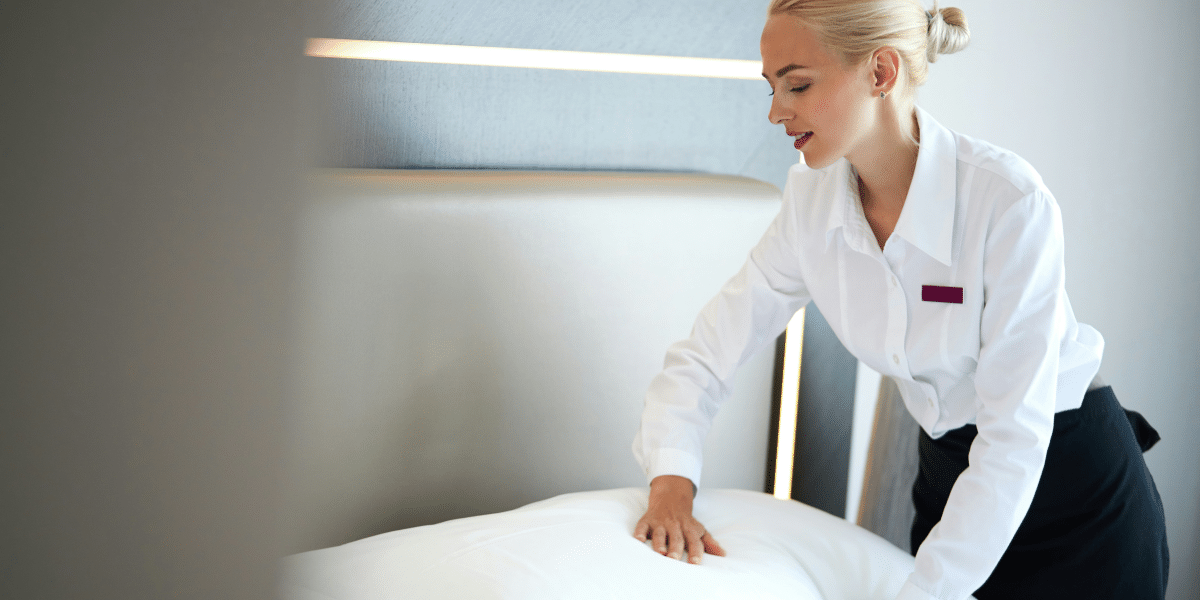Blankets are essential in many environments, offering comfort, warmth, and functionality. In settings such as hotels, hospitals, long-term care facilities, and treatment centers, choosing the right blanket is crucial for enhancing comfort and meeting specific needs and standards. This guide will help you navigate through various types of blankets from textilesdepot.com —such as ripcord, thermal, weave, waffle weave, and more—to find the perfect fit for each setting.
Hotels: Elevating Guest Experience with Luxurious and Durable Options
In a hotel setting, blankets need to offer both luxury and practicality. Guests expect a high level of comfort, meaning the blanket choice can significantly impact their overall experience. Here’s a breakdown of suitable blanket types for hotels:
- Microfiber: Known for their softness and lightweight feel, microfiber blankets are popular. They are durable and resistant to stains, making them easy to maintain. Microfiber also dries quickly and retains its shape well after washing, ensuring longevity.
- Cotton-Polyester Blended: This blend combines the softness and breathability of cotton with polyester’s durability and wrinkle resistance. Cotton-polyester blended blankets are perfect for hotels as they offer comfort while being easy to care for.
- Waffle Weave: Featuring a distinctive texture, waffle weave blankets are stylish and functional. Their textured pattern provides warmth without excessive weight and the design adds a touch of elegance to the room.
- Herringbone Woven: This classic pattern makes any hotel room look sophisticated. Herringbone woven blankets are made from high-quality materials, providing a timeless aesthetic and durable use.
- Polar Fleece: Soft and warm polar fleece blankets are ideal for colder climates or more relaxed hotel rooms. They are lightweight, easy to care for, and provide a cozy feel for guests.
Hospitals: Meeting Safety, Hygiene, and Comfort Requirements
In hospitals, blankets must adhere to stringent safety and hygiene standards while offering comfort to patients. Learn more about blankets here :
- Snag-Free Thermal: These blankets are designed to provide warmth without snagging or catching on other fabrics, essential in a hospital setting where frequent movement and washing occur. They are also easy to sanitize and maintain.
- Acrylic: Acrylic blankets are lightweight and provide good warmth. They are resistant to wrinkles, easy to clean, and hypoallergenic, which makes them suitable for hospital environments where comfort and cleanliness are crucial.
- Bath Blankets (Bleached and Unbleached): Bath blankets are essential for patient comfort and hygiene in hospitals. Bleached bath blankets are treated to be more hygienic, while unbleached versions offer a more natural option. Both types are durable and designed to withstand frequent washing.
- Thermal Blankets: These are designed to provide additional warmth, essential in medical settings where patients might be prone to feeling cold. Thermal blankets are often used in various medical situations, including during surgery and recovery.
- Wool: Wool blankets offer natural warmth and breathability, benefiting patients needing extra comfort. However, they should be used cautiously as they can be more challenging to clean than synthetic materials.
Long-Term Care Facilities: Comfort, Durability, and Ease of Maintenance
In long-term care facilities, such as nursing homes and assisted living centers, blankets must offer comfort and durability while being easy to care for. Here’s what to consider:
- Baby Receiving/Thermal Blankets: These blankets are soft and gentle and provide excellent warmth and comfort. While designed for babies, their quality makes them suitable for long-term care environments where soft and gentle fabrics are needed.
- Leno Weave: Leno weave blankets are known for their durability and breathability. The weave pattern enhances airflow, making them suitable for residents who need warmth without overheating.
- Ribcord: Ribcord blankets feature a ribbed texture that adds warmth and comfort. They are also durable and easy to maintain, making them a practical choice for long-term care settings.
- Microfiber: Like hotels, microfiber blankets are an excellent choice for long-term care facilities due to their softness, durability, and ease of cleaning.
- Cotton-Polyester Blended: This blend is also a good option for long-term care facilities. They offer a balance of softness, durability, and ease of maintenance, making these practical for everyday use.
Treatment Centers: Addressing Therapeutic and Practical Needs
In treatment centers, blankets may need to address specific therapeutic needs or provide comfort during treatments. Here’s a look at appropriate blanket types:
- Massage Table Blankets: These blankets are designed specifically for use during massages. They are usually soft, comfortable, and easy to clean, providing a pleasant patient experience.
- Weighted Blankets: Weighted blankets can benefit treatment centers dealing with anxiety or sleep disorders. They offer therapeutic benefits by providing gentle, even pressure that can help improve sleep and reduce anxiety.
- Throw Blankets: Throws are versatile and can be used for added warmth or comfort during treatments. They are often used in waiting areas or patient rooms to provide a cozy and inviting atmosphere.
- Polar Fleece: As with hotels, polar fleece is an excellent option for treatment centers due to its softness and warmth. These are also easy to care for, essential in a setting where hygiene and maintenance are key.
- Size Considerations: From Twin to King Regardless of the specific type of blanket, it’s important to choose options in various sizes to accommodate different needs. Blankets available in sizes from twin to king ensure you find the right fit for any bed or seating arrangement. This flexibility allows you to standardize your blanket options across various settings or customize them based on specific requirements.
Summary
Selecting the right blanket for hotels, hospitals, long-term care facilities, and treatment centers involves considering functional and aesthetic needs. Each environment has unique requirements, from the luxury and durability needed in hotels to hospital safety and hygiene standards. By understanding the characteristics of various blanket types—such as ribcord, thermal, waffle weave, and more—you can make informed decisions that enhance comfort, meet practical needs, and improve customer satisfaction.
Incorporating blankets that cater to the specific demands of each setting not only ensures optimal performance but also contributes to a positive experience for guests, patients, and residents. Whether you are outfitting a hotel room, a hospital ward, a long-term care facility, or a treatment center, choosing the right blanket is a critical step toward achieving comfort and functionality.
Published by: Holy Minoza



















